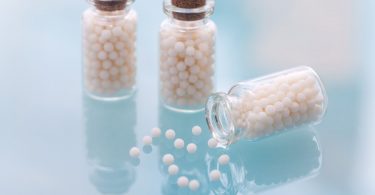Author:
Prof (Dr) Vijayendra V Itagi
B.Sc., M.D (HOM), M.S(C&P)
Vice-Principal
Prof & HOD, Department of Materia Medica
Yenepoya Homoeopathic Medical College & Hospital-Mangalore-Karnataka State, India
INTRODUCTION:
Vascular sclerosis is a condition of hyaline degeneration of blood vessels with hypertrophy of the tunica media and subintimal fibrosis. There is weakening and loss of elasticity in the arterial walls. Its prevalence is increasing in many developing countries due to westernization of diet, obesity, ageing, reduced physical activity and other adverse lifestyle changes. Statins are most widely prescribed by physicians for cases on arteriosclerosis and average doses of prescription are increasing day by day. Despite all the positive research and trial about its effectiveness for modifying cholesterol, patients show poor compliance due to its ineffectiveness on muscle. Further suspension of statins leads to impairing of vascular function thus increasing morbidity and mortality in patients with vascular diseases. Hence in view of increasing prevalence there is need for rapid, gentle and permanent cure for this condition.
NEED FOR STUDY:
Lifestyle related disease are on a rise in our country. Arteriosclerosis is an outcome of unhealthy choices. Identifying the causes is critical because the elimination of the cause and appropriate treatment is very essential. Global populations are undergoing a major epidemiological transition in which the burden of arteriosclerotic disease is shifting rapidly from high income to low income and middle income countries. The greater focus is now required on the prevention and management of this disease in less advanced countries.
REVIEW OF LITERATURE:
Arteriosclerosis is a disease of the arteries affecting primarily the intimal coat and characterized in general by increasing accumulations of lipids and increasing fibrous thickening in localized areas of the intima.
Arteriosclerosis in man develops earlier and more frequently in individuals with high blood cholesterol levels than in those with normal blood cholesterol. It is not known whether changes in endothelial permeability or in the sub endothelial ground substance play a role in the deposit of lipids. The localization of arteriosclerotic lesions may be determined by variations in the structure and composition of the vessel wall itself or by mechanical or hydrodynamic forces acting at particular points in the arterial walls.
PATHOPHYSIOLOGY:
The lesions of arteriosclerosis begin as the intima (innermost layer of blood vessel wall) of the arterial wall start to fill up with the deposition of cellular wastes. As these starts to mature, they can take different forms of arteriosclerosis. All are linked through common features such as the stiffening of arterial vessels, loss of elasticity, thickening of arterial walls and degenerative changes. The further degenerative changes include necrosis of the centres of the arteriosclerotic lesions with the formation of cavities filled with lipid-rich debris (atheroma), the extension of the process to involve the media, necrosis and disintegration of the intimal lining over atheroma and calcification of the lesions. These changes progress in the absence of recognized clinical signs or symptoms, or abnormalities detectable at present by laboratory methods, until the disease has caused significant impairment of blood supply.
Narrowing or occlusion of coronary, cerebral or peripheral arteries brought about by arteriosclerosis with or without thrombosis accounts in preponderant measure for the morbidity and mortality associated with the disease. The fact that there is no way of studying the lesion itself in the living patient, or of determining whether it is developing, regressing or remaining static at any particular time, makes extremely difficult the study of the factors that may be involved.
It seems probable that the lipids in the lesions come from the lipids of the blood although direct proof of this is not available. If this is true any factor that influences the chemical composition, the level, the stability or the physical state of the lipids in the blood may be of importance in the pathogenesis and prognosis of the disease.
CALCAREA FLUORICUM
Common name: Fluorspar, Fluoride Of Lime
Chemical properties:
Formula : Ca F2
Specific gravity of crystals: 3.4
It contains 51% of calcium and 49% of fluorine.
It occurs in nature in mineral fluorspar, it is crystalline, crystallizing in various colours and in cubical and octahedral form.
It is practically insoluble in water, but is decomposed by sulphuric acid generating hydrofluoric acid.
Preparation: selected pieces of crystal fluorspar are prepared by trituration, according to the methods of homoeopathic pharmacy.
Homoeopathic data:
Calcarea fluor has been proved by J.B Bell and is reported in Allen’s Encyclopaedia Vol X, pg 398.
Pathophysiology:
- Calcarea flour is found in the surface of the bones and in the enamel of the teeth. It is also a constituent of the elastic fibres and of epidermis. Elastic fibres are found in the skin, in the connective tissue and in the vascular walls.
- A disturbance in the equilibrium of the molecules of the calcarea fluor causes a continued dilatation or chronically relaxed condition of the implicated fibres.
- If the elastic fibres of any portion of the vessels of the connective tissue or of the lymphatic system have arrived at such a condition of relaxation, indurations of such a part sets in.
- In regard to the reabsorption of induration, two possibilities are to be thought of: (a) the elastic fibres near the induration have lost their functional ability on account of the pressure exerted. Molecules of Calcarea fluor administered restore their functional integrity and thus are enabled to throw off the exudation, which will then be absorbed by the lymphatic vessels. (b) by means of volumetric force of carbonic acid contained in the blood a part of fluorine is split off the fluoride of lime, this combines with nascent hydrogen forming hydrofluoric acid, which gradually dissolves the molecules of the morbid product and these are taken up by the lymphatics.
General biochemical action: disease having they’re in the substance forming the surface of bone, enamel of the teeth, and all elastic fibres. Thus, all ailments which can be traced to relaxed conditions of any of the elastic fibres, including dilatation of the blood vessels, arterial and venous blood tumours and piles, varicose and enlarged veins, indurated gland of stony hardness.
Important indications:
- When a fibrous exudation is not dissolved by suppuration, but has become hardened, Calc fluor must be given.
- Calc fluor removes fibroid deposits around endocardium and blood vessels and restores the normal endocardial structure.
- Valvular diseases when tuberculous toxins attack heart and blood vessels.
- Chief remedy for vascular tumours with dilated blood vessels and for varicose and enlarged veins.
- Dilatation of heart with palpitations.
- Indicated when there is hard induration of the tissues with threatened suppurations.
- Corresponds to solidified infiltrations.
- It is reported to have reduced the size of a giant cell sarcoma, to have cured syphilitic periosteal swelling, varicose veins, tumorous dilated vessels.
- It has been employed during early stages of aneurysms to reduce its size and keep it in check.
- Osseous growths, especially in tarsal and carpal articulation.
- Knots and kernels and tumours in the female breast.
- Swelling or indurated enlargements having their seat in the fasciae and capsular ligaments of joints or in the tendons.
Administration:
The higher potencies of the drug gives the best results. Schussler recommended the 12th decimal trituration, but the 3x and 6x have been found very efficient.
Discussion:
It’s a major burning issue due to life style disorders are upcoming day by day.based on the properties of Calcerea Flouricum is effective in case of Arteriosclerosis & Atherosclerosis. This can be used as preventive as well as supportive line of treatment. Its cost effective is also considered.
Along with Homoeopathic treatment patient will be advised for regular physical exercise, walking & meditation. Healthy Life style .
REFERENCES:
- Peripheral Artery Disease: Epidemiology and Global Perspectives.F.Gerry R. Foweks, Victor Aboyans, Freya J I Foweks, Mary M . Mcdermott, Uchchukwun K A Sampson And Michael H Criqui
- Homoeopathy in the management of Dyslipidaemia: a short review- Rupali D Bhalerao, Raj Manchanda, Varanasi Roja. (Indian journal of research in Homoepathy, 2015)
- Vascular comorbidity is associated with more rapid disability progression in multiple sclerosis.Neurology 74(13), 1041-1047, 2010. RA Marrie, R Rudick, R Horwitz, Cutter, T Tyry, D Campagnolo, T Vollmer.
- Lectures on Homoeopathic Materia Medica: Kent J T. Low Price Edition 2002, B. Jain Publishers (P) LTD, New Delhi, pg 330
- J.T Kent Unpublished Materia Medica. Edited by Ahmed N. Currim. 2nd Edition 2010. B. Jain Archibel S.P.R.L. Europe. Pg 572.
- A Manual of Materia Medica, Therapeutics and Pharmacology with Clinical Index; Blackwood A.L.10th Impression, B Jain Publishers (P) LTD, Noida. Pg 197-198.
- The Guiding Symptoms of Our Materia Medica; Hering C. Volume III,12 Impression,2018. B Jain Publishers (P) LTD, Noida. Pg 144-150.
- Concordant reference complete classic materia medica; frans vermeulen.1st edition 2011.B. Jain Archibel S.P.R.L Europe.Pg 434-437.
- The 12 Tissue Remedies Of Schussler; Boericke & Dewey. 6th edition. B jain publishers (P) LTD, Noida. Pg 37-45.





